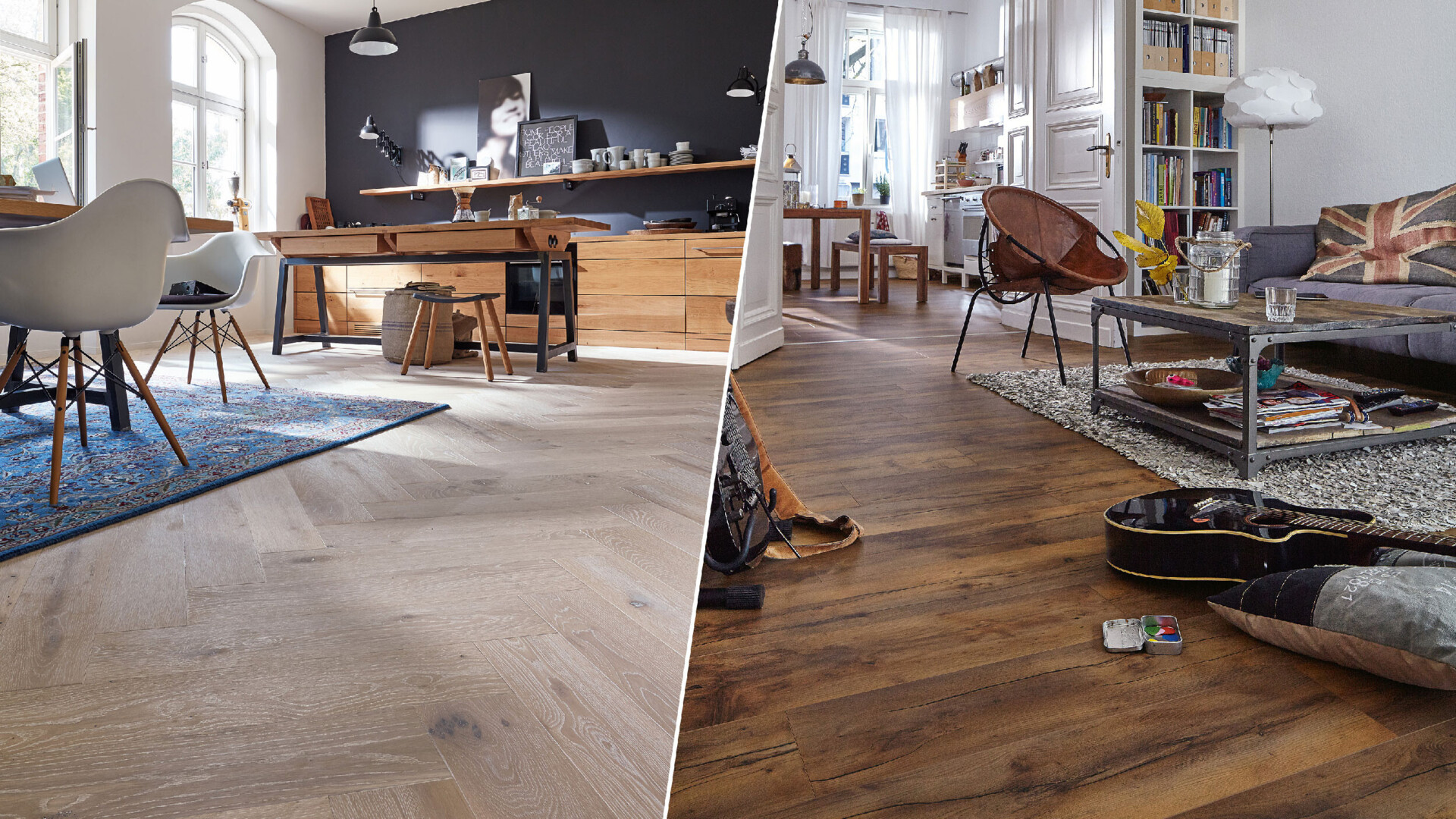
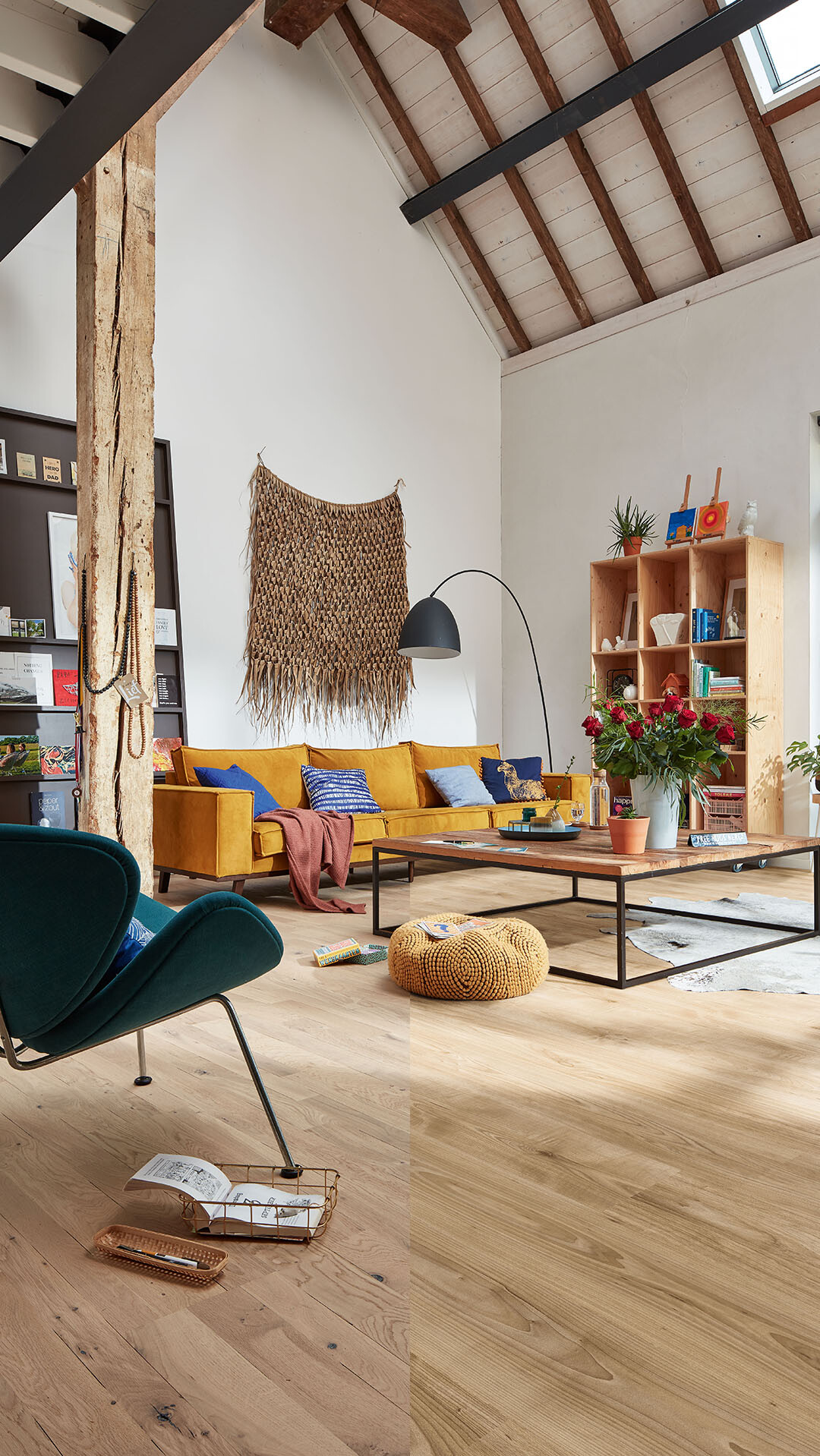

Parquet and laminate flooring are among the most popular types of flooring. They seem similar in many ways, particularly in how they look: It’s almost impossible for anyone to distinguish between high-quality laminate flooring in a wooden look and parquet flooring at first glance. We will compare the most important differences between the two types of flooring here.
Firstly, of course, it cannot be said that one type of flooring is worse than the other – both types of flooring have their own particular advantages, and maybe even some disadvantages. In that sense, the focus here is on discovering how both types of flooring are constructed, what their construction means for how they are used, and which flooring is best suited to your individual living situation so that you can enjoy your new flooring for many years to come.
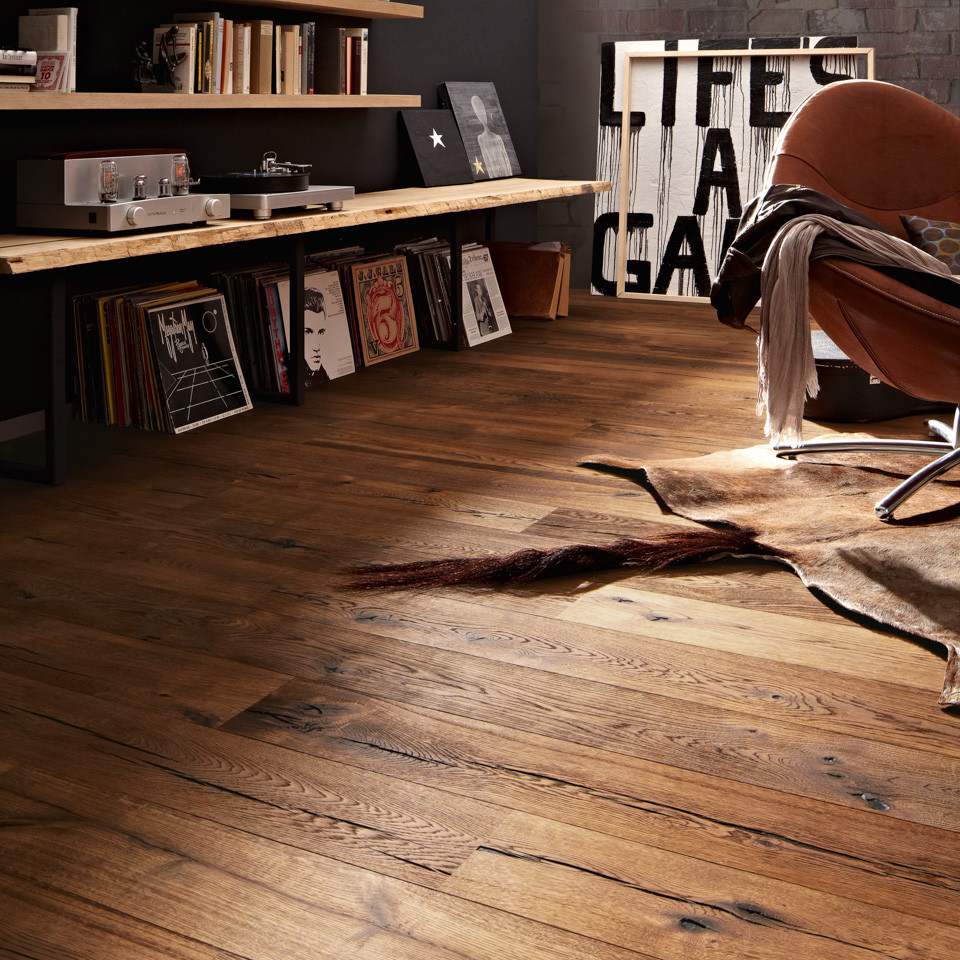
Parquet is a type of flooring made of real wood. The HDF middle layer, the backing and the surface are all made of wood. By its very nature, parquet flooring creates a natural, cosy atmosphere in any room. And when it comes to being warm underfoot, real wood flooring is unbeatable. As real wood flooring, parquet flooring needs to be properly maintained in addition to regular cleaning. That is one of the main differences between parquet and laminate flooring. But here’s the good news: The surface of ready-made parquet like MEISTER parquet flooring is already treated in a way that makes it ready for residential use, and it does not require additional sealing. In addition to normal cleaning (simple hoovering is often sufficient to remove loose dirt), the planks should be re-oiled once a year (for naturally oiled parquet flooring). Lacquered surfaces will need to be treated with an appropriate care product. Learn exactly how this works here.
Parquet flooring is made of wood, which is a natural material, so it has one other minor disadvantage compared to laminate flooring: Sunlight can cause discolouration. Depending on the type of wood, it may turn lighter, darker or take on a yellow tinge. If you have full-length windows and correspondingly strong sunlight hitting the floors, you should make sure to protect your wood flooring by hanging curtains, or by installing laminate flooring instead. Laminate scores an 8 on the blue wool scale; this is one of the best scores for colour-fastness, so laminate flooring does not change colours in the sun, which is one of its major benefits.
Unlike laminate flooring, parquet flooring can be sanded down (even the multilayer version), meaning that it is longer-lasting than laminate flooring, but is more expensive to purchase initially. However, the higher price pays off thanks to its potentially longer service life. Incidentally, parquet flooring from MEISTER is highly sustainable flooring: The stable construction of the HDF middle layer in ready-made parquet flooring means that the third layer (the wooden covering layer) only requires a thickness of 2.5 mm. This minimizes the use of valuable wood, is good for the environment and still allows the flooring to be sanded down if necessary.
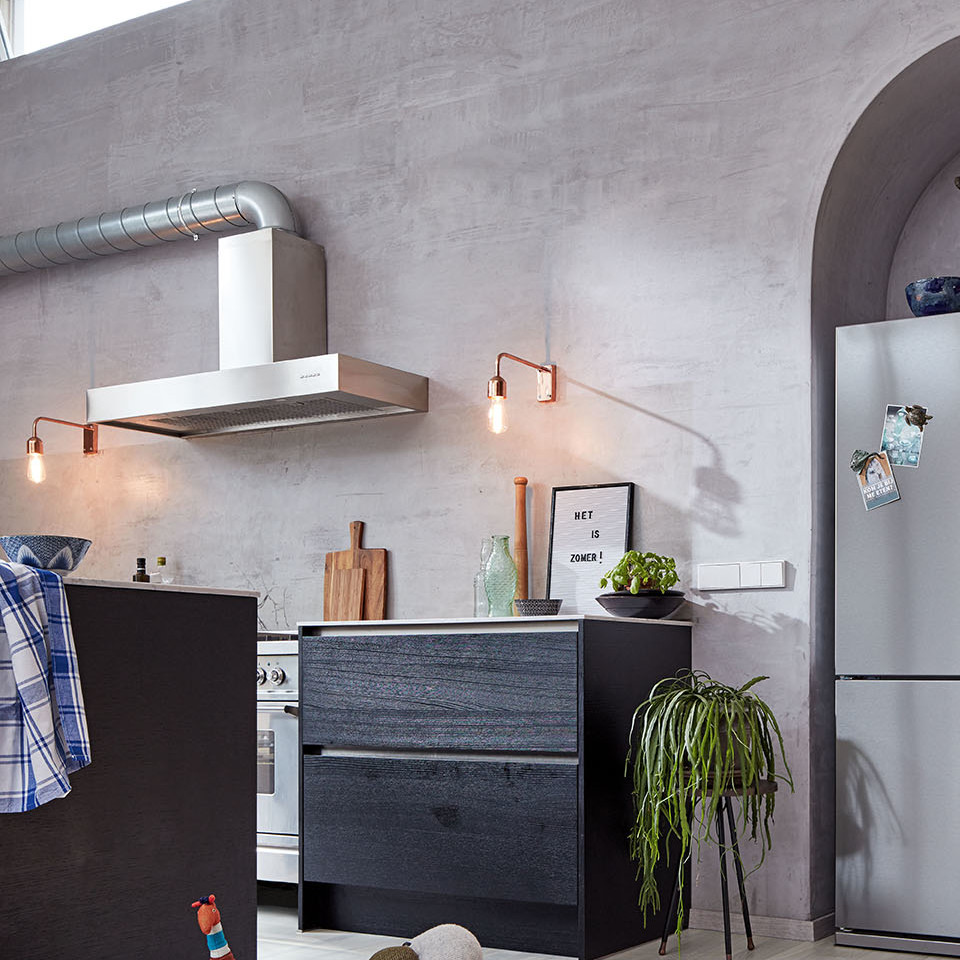
Laminate flooring still faces a great deal of unfair bias. First and foremost: Laminate flooring is definitely not made of plastic, meaning that it is not ‘artificial flooring’ like vinyl. In fact, laminate flooring is made from 100% natural materials, particularly wood, (decor) paper and resin. This means that it is a natural, sustainable flooring, like parquet.
Laminate flooring is available in many different wood decors and other designs; the selection is practically endless, and manufacturers are always updating their product ranges to suit the latest trends. These decors are not only made in a wood look; they are also available in imitations of many other materials, such as stone or tile.
Today’s high-quality laminate flooring no longer has anything in common with the laminate flooring that was on the market in the 1990s – they look nothing alike, and they do not even have the same technical properties. Like ready-made parquet flooring, laminate flooring is constructed from multiple layers. In the middle is high-density fibreboard; a stabilising backing forms the bottom layer, and the top layer is made of decor paper impregnated with melamine resin. This resin is also what makes the laminate flooring so durable and easy to maintain. The high-quality premium variant of laminate flooring with extra scratch-resistant Diamond Pro is probably the best choice for children and pets, as it the most durable. And loud laminate flooring is also a thing of the past. The HDF middle layer makes the planks relatively heavy, so they do not vibrate easily. An integrated or separately installed sound-absorbing cushion makes laminate flooring even quieter. Incidentally, laminate flooring can also handle getting wet. Water-tight joints and a bulge-resistant middle layer ensure that mop water and spills will not cause any damage. Waterproof laminate flooring can even be installed in bathrooms!
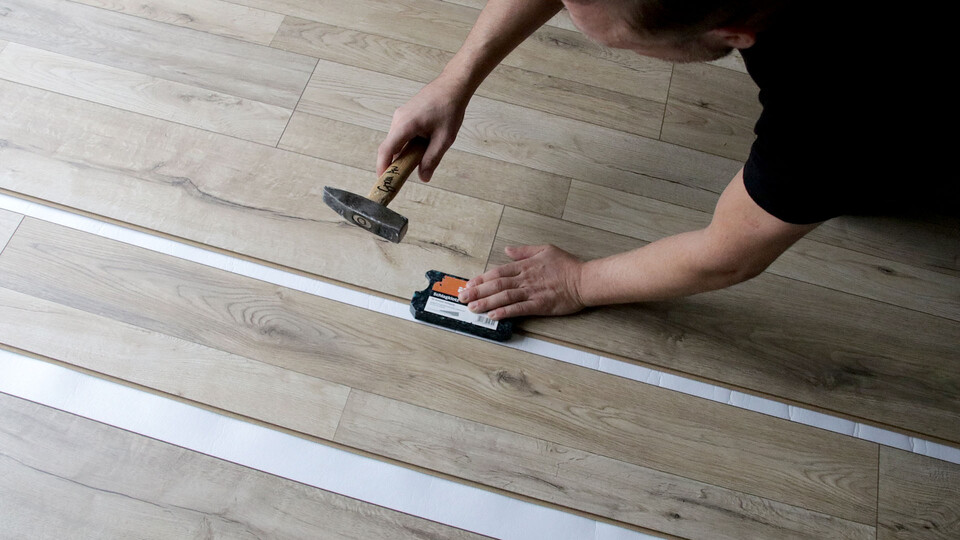
There are no fundamental differences when it comes to installing laminate and parquet flooring. Both types of flooring have a sturdy click system that make them ideal for floating installation, even over underfloor heating, and both are suitable for full-surface bonding, as well. Laminate flooring is also available with an integrated sound-absorbing cushion, which removes one step of the installation process compared to wood flooring and makes it even easier to install. And the work is even easier with a laminate cutter than with a saw – although a saw is definitely required for parquet flooring. The only difference is that it’s naturally more frustrating when you make a mistake cutting more expensive parquet flooring than cheaper laminate planks.